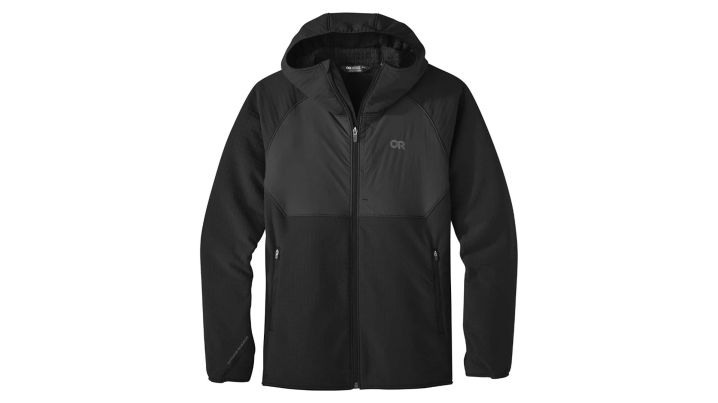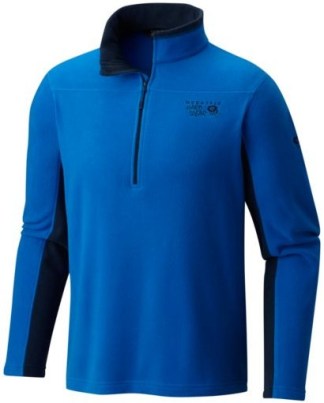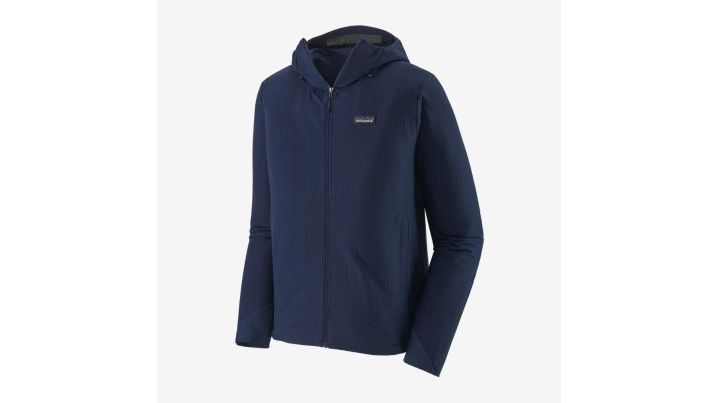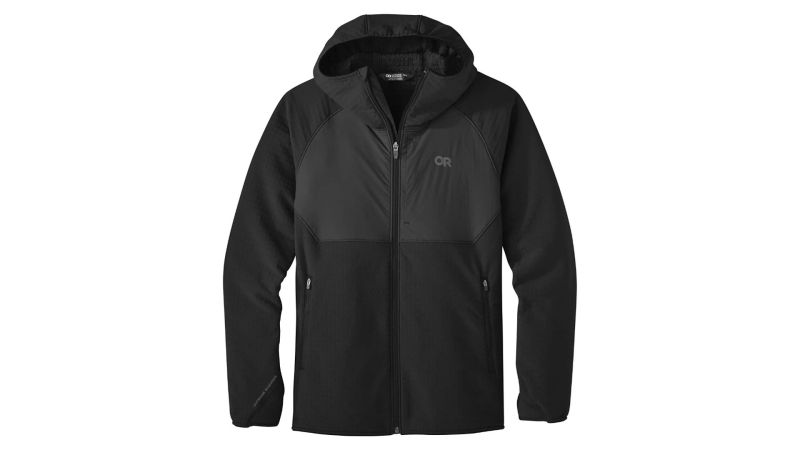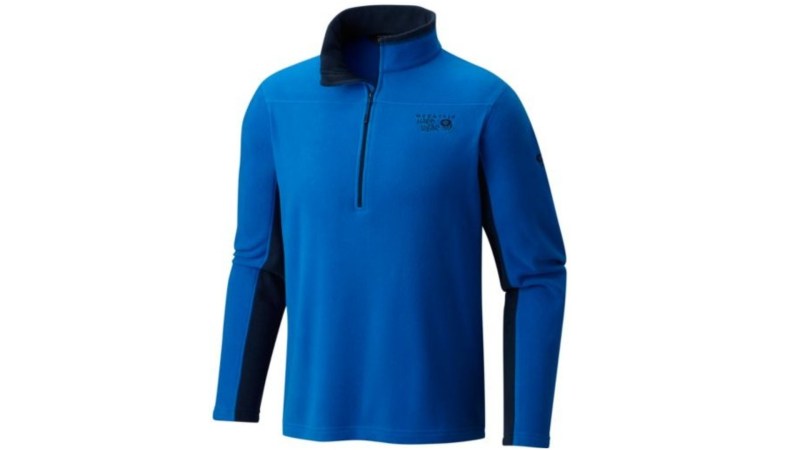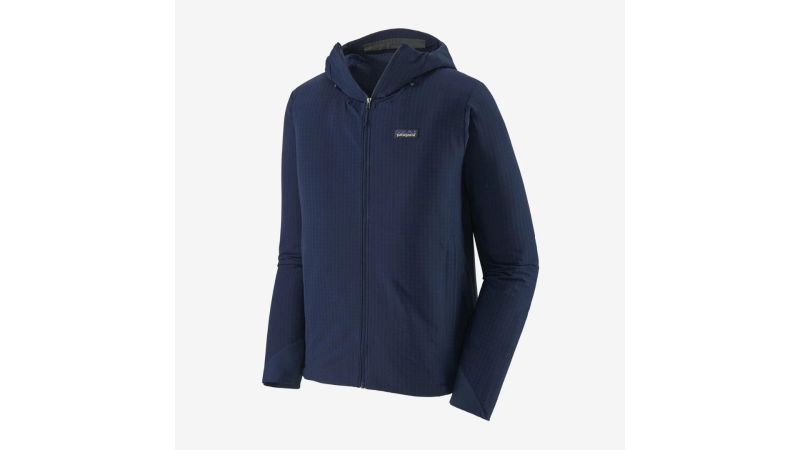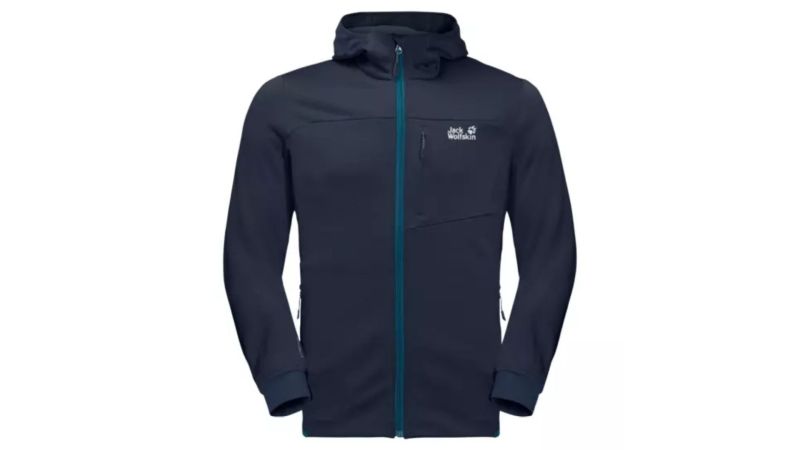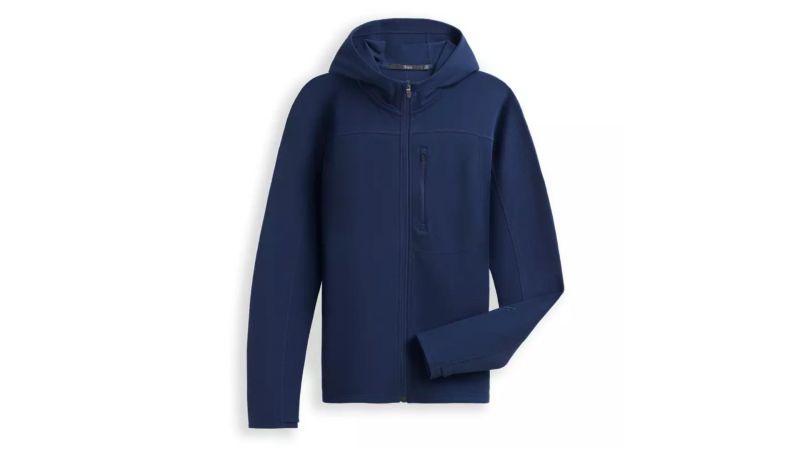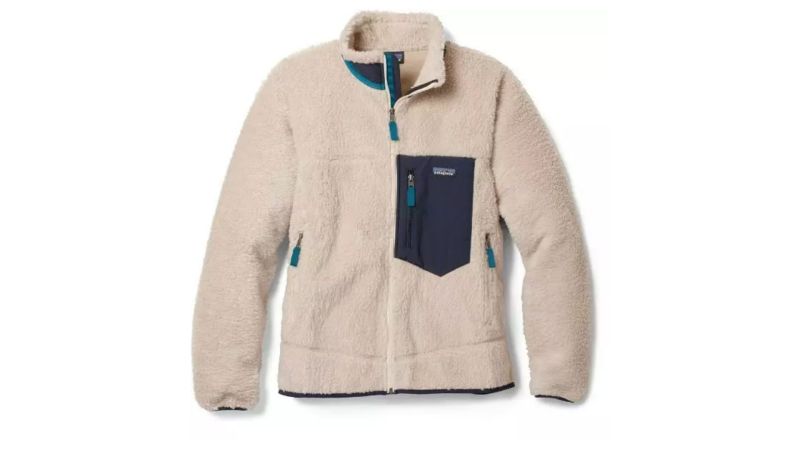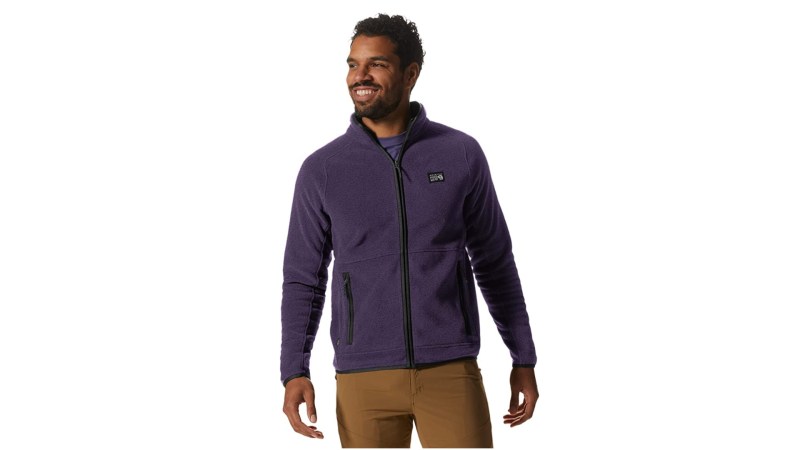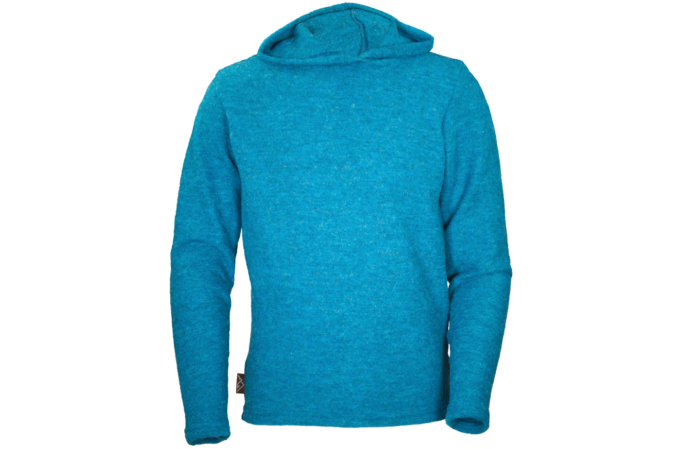We may earn revenue from the products available on this page and participate in affiliate programs.

There are some in the outdoor world who say fleece is dead. Nothing could be further from the truth. While there are newer active insulation materials and hydrophobic down on the market, synthetic fleece jackets still have a place in your outdoor wardrobe for the following reasons.
- Fleece is hydrophobic and holds less than one percent of its weight in moisture
- Fleece continues to insulate when damp and dries quickly (down does not)
- Fleece is very breathable and lightweight
- Fleece is versatile: it can be used as a mid-layer or outer layer
- Fleece is comfy
- Fleece can be eco-friendly: many jackets today are made from recycled materials
We took a look at the best of what’s available on the market to help you choose the best fleece jacket to meet your needs.
Best Overall
Outdoor Research Vigor Plus Fleece Hoodie
Best Value
Mountain Hardwear Microchill 2.0
Editor’s Choice
Patagonia R1 TechFace Hoody
Honorable Mention
Jack Wolfskin Hydro Grid Fleece
Best Non-Fleece
Ibex Shak Hoodoo Hoodie
Best for Hanging Out
Patagonia Classic Retro-X Jacket
Most Comfortable
Mountain Hardwear Double Brushed Fleece Jacket
Best Non-Synthetic
Appalachian Gear Company All-Paca Fleece Hoodie
Why you should trust us
I have more than 35 years of backcountry experience. I’m an avid long-distance backpacker, rock climber, and mountaineer who understands the value well-designed gear delivers, especially when your life depends on it. I don’t get paid by the manufacturers and have editorial independence. My editor leaves it to me to recommend and prints what I write. All of this enables me to provide you, our valued readers, with our unvarnished, honest opinions on the recommendations we make.
Types of fleece jackets
Synthetic fleece jackets have been around since the early 1980s when Aaron Feuerstein invented Polartec, a polyester yarn woven into a thick fabric. His aim was to improve upon the insulating power of wool fibers by creating a material that was lightweight and warm even when damp. Patagonia was the first major retailer to use Polartec in its classic Synchilla jacket, and there have been more than 40 years of innovation since. Fleece jackets are generally categorized by weight: lightweight (100 g/m2), midweight (200 g/m2), and heavyweight (300 g/m2).
Lightweight
Lightweight fleece jackets are typically made from 100 weight Polartec and are sometimes referred to as R1 jackets. They are the most breathable and packable and offer moderate warmth. The 100 series jackets are typically designed for high output efforts like trail running, cross country skiing, and mountain biking.
Midweight
Midweight fleece jackets are typically made from 200 weight Polartec and are also called mid-layers. They can be worn as a jacket during cool temperatures or as an insulating layer over a base layer and under a windproof shell during colder temps. They are the most versatile of the bunch.
Heavyweight
Heavyweight fleece jackets are typically made from 300 (or greater) weight Polartec and are the warmest but also the least breathable. You don’t see as many 300 or 400 weight jackets on the market anymore, as most people opt for lightweight down jackets or soft shells in lieu of these bulky and baggy outer layers.
Key features of fleece jackets
Fleece jackets have one main distinct advantage over other insulating layers in outdoor clothing: They continue to insulate when damp and dry out faster than other insulating materials. They are also soft and comfortable, pill-resistant and durable, very breathable, and provide great warmth for their weight. Most today are made from recycled fibers as well. I prefer to take one along on trips to the backcountry when the threat of rain presents. Lighter-weight fleece jackets are also great for high output days in cooler weather because they are very breathable and allow excess body heat to escape so you don’t become a sweaty mess.
Hydrophobic material
Synthetic fleece doesn’t absorb water, and they allow water vapor and sweat to pass from warmer, denser areas (like next to your body) to the cooler, drier environment. Unlike wool, they don’t absorb moisture and continue to insulate when damp. One of the best improvements made over the decades was the microgrid design that allows for greater breathability. Almost every fleece jacket I own today has a microgrid design.
Zippers
I prefer full-length zippers over half or quarter zip designs. While the full zipper does add some nominal weight to the jacket, I find the versatility in body temperature regulation and ease of donning and doffing to be worth it.
Pockets
Most fleece jackets have one chest and two hand-warming pockets. I look for jackets with zippered pockets as they help me to keep from losing things in the backcountry, especially on rocky or leafy terrain. Better jackets will have interior dump pockets, which are super handy for things like maps, small water bottles, or drying out yesterday’s wet socks while you are on the go.
Hoods
Some people love them, some people hate them. I prefer a hood on all of my jackets. Hoods are super versatile in helping regulate body temperature and keep the cold air off the neck.
Benefits of fleece jackets
In general, fleece jackets excel over other outdoor garment materials in the areas of warmth, wind and water resistance, and breathability.
Warmth
As mentioned earlier, fleece offers great warmth for minimal weight. While not as warm per ounce as down, when it gets wet, it’s easy to wring out and dries out fast. Fleece works best as a mid-layer or outer layer when treated with a DWR finish. Fleece also helps keep you warm by its breathability — helping keep you dry from the inside out.
Durability
Fleece jackets can take a beating. Roll them up, throw them in the backseat of your truck, toss a few bags of mulch on top of them, and they’ll be fine. You don’t have to baby fleece jackets like you have to with down jackets. Plus, they are more spark-resistant around the campfire.
Comfort
Fleece is cozy next to the skin and warm. Look for garments with flat-stitched seams for additional comfort, and also features that help keep the wind out like hoods, drawcord hems, thumb loops or elasticized wrists, and wind guards behind zippers.
Pricing considerations for fleece jackets
Budget
If the jacket you are considering is priced below $50, take a good look and inspect it for quality and a Polartec label. Not all fleece material is the same, nor does it deliver the same performance. I like to wait until spring and take advantage of all the premium brands attempting to offload last year’s inventory. It’s better to get a $149 jacket on sale for $60 than pay full price for a lesser-quality brand.
Mid-range
You can find a lot of great fleece jackets in the $60 to $120 range. Variations in prices are largely due to features and the performance of the materials used. Things like full-length zippers, hoods and drawstrings, and thumb loops, all add to the construction cost and thus the price.
Premium
I consider anything above $120 to be a premium price for a fleece jacket. At this price point, I’m looking for premium performance fabrics, microgrid fabric, and a bunch of details like hoods, thumb loops, drawcord hems, and zippered pockets. Typically, with a premium price comes a bombproof warranty — like Patagonia’s lifetime guarantee — so check the fine print.
How we chose our top picks
All the fleece jackets in this review were selected based on personal ownership, hands-on inspection, interviewing other experts, and thoroughly reviewing manufacturers’ specifications. We take our time to get to know the strengths and weaknesses of each item and also check out the reviews of other experts just to make sure we’re not missing anything.
FAQs on fleece jackets
You’ve got questions, Task & Purpose has answers.
Q. What is the warmest fleece jacket?
A. The warmest fleece jacket I’ve found on the market is a toss-up between the Patagonia Retro-X and the North Face Denali 2. The former is made from high-loft Sherpa fleece and the latter from Polartec 300.
Q. What is the thickest fleece jacket?
A. Definitely, jackets made with Sherpa fleece.
Q. What’s the difference between fleece and microfleece?
A. Chemically, they’re the same fabric. Microfleece is just a lighter version — typically below 100 g/m2 in weight.
Q. What is the difference between fleece and polar fleece?
A. Fleece is a general term applied to synthetic polyester material derived from plastic. Polar fleece is heavier and more durable, in common weights of 100, 200, or 300 g/m2.
Our gear section
Joe Plenzler is a Marine Corps veteran who served from 1995 to 2015. He is a backcountry expert, long-distance backpacker, rock climber, kayaker, cyclist, wannabe mountaineer, and the world’s OK-est guitar player. He is currently section-hiking the Appalachian Trail with his partner, Kate Germano. He supports his outdoor addiction by working as a human communication consultant, teaching at the College of Southern Maryland, and helping start-up companies with their public relations and marketing efforts.
